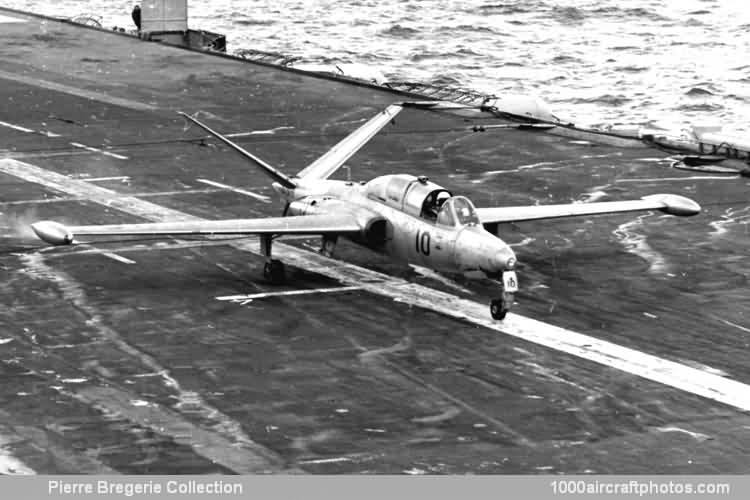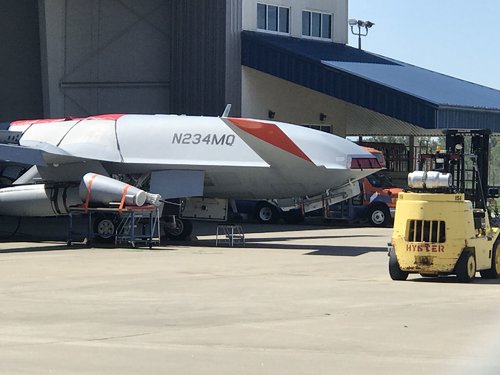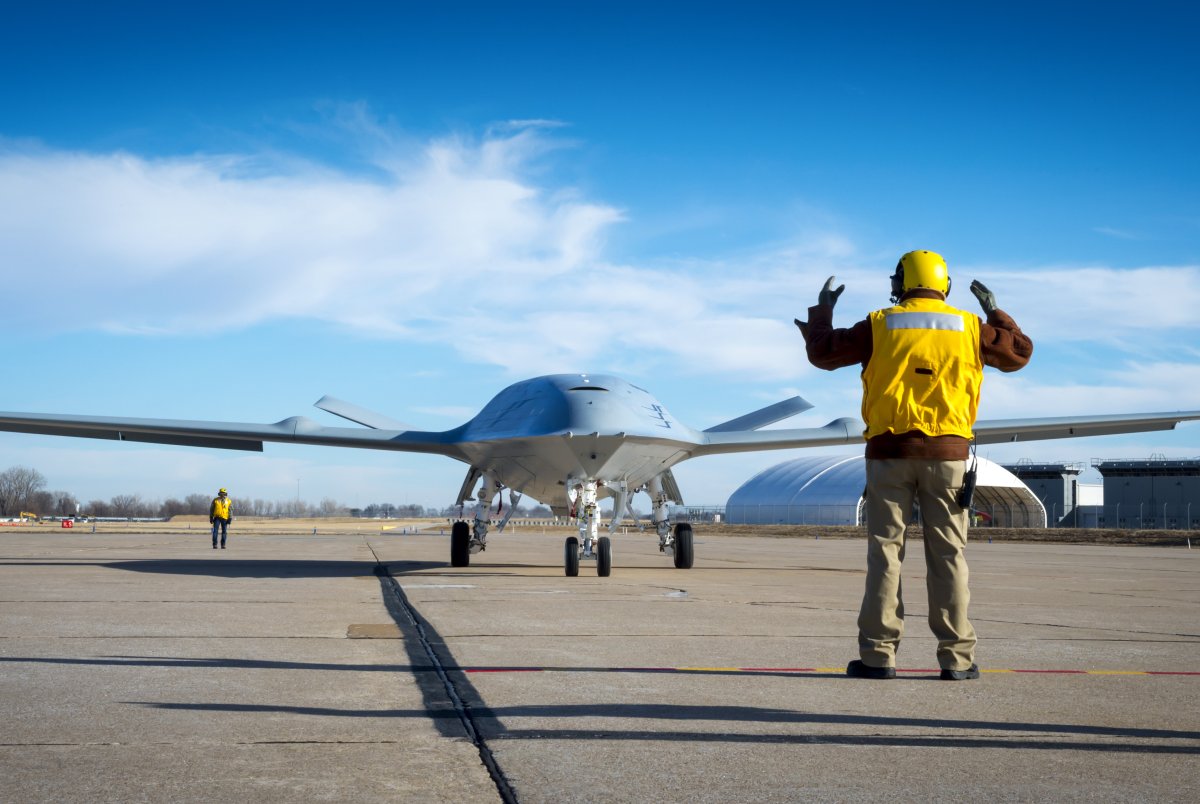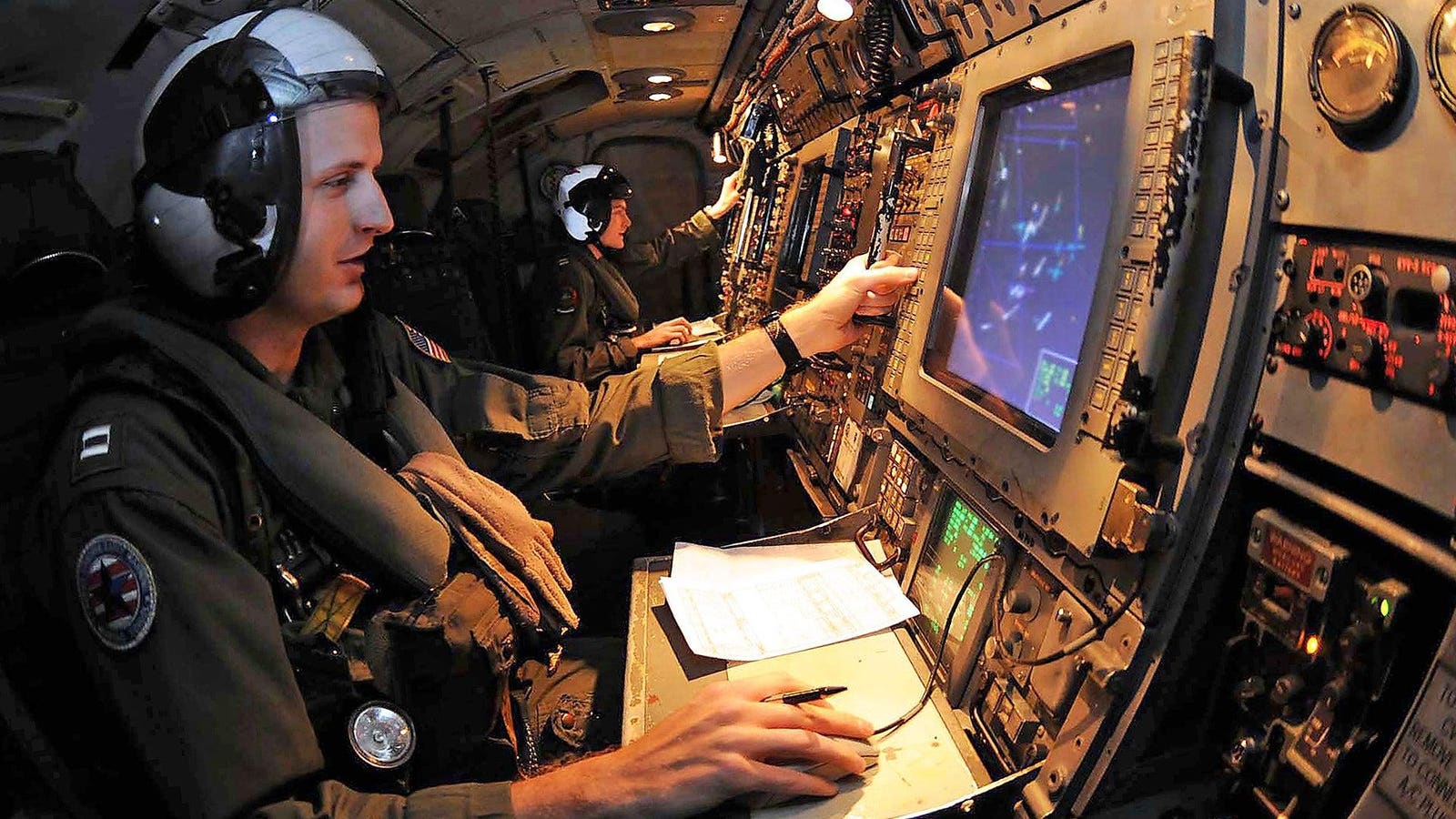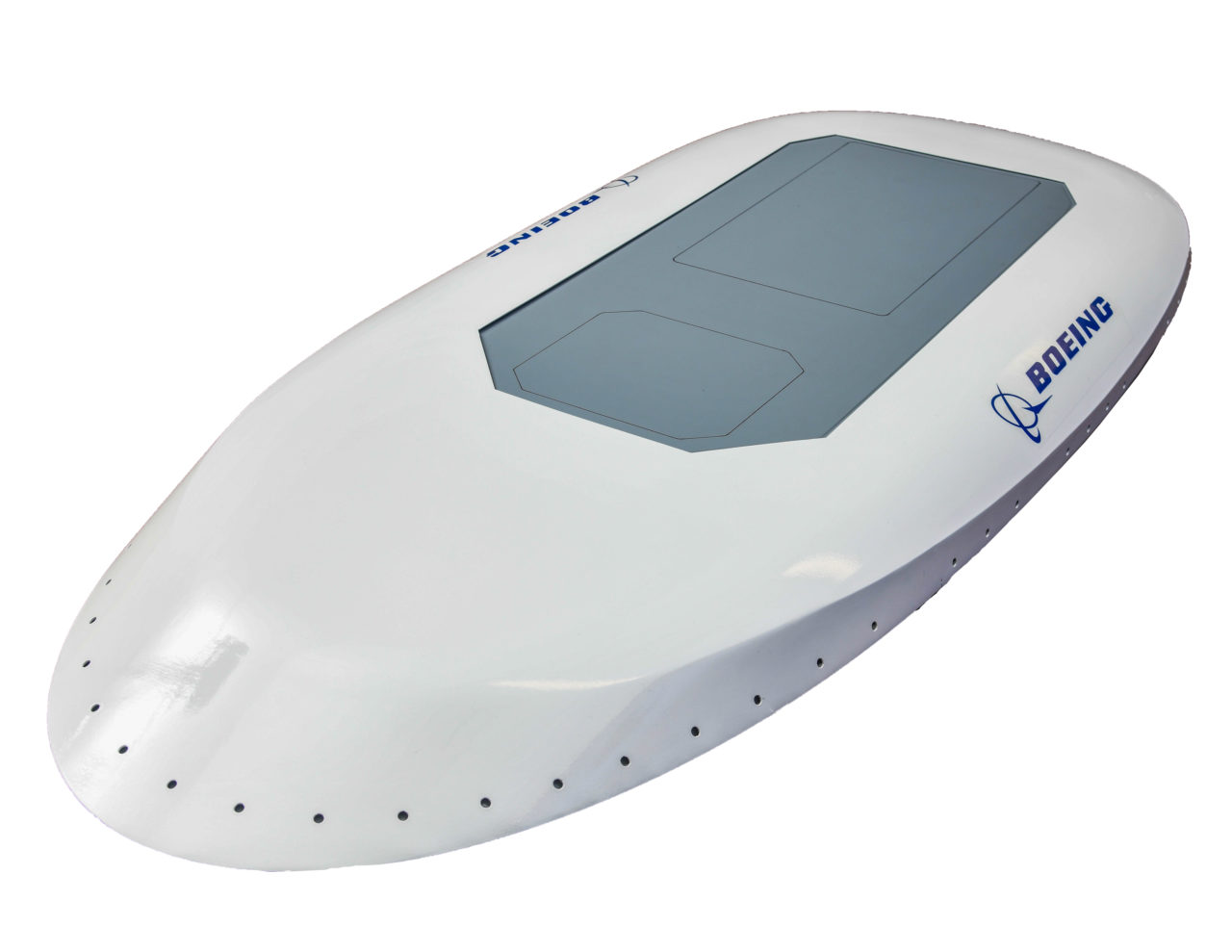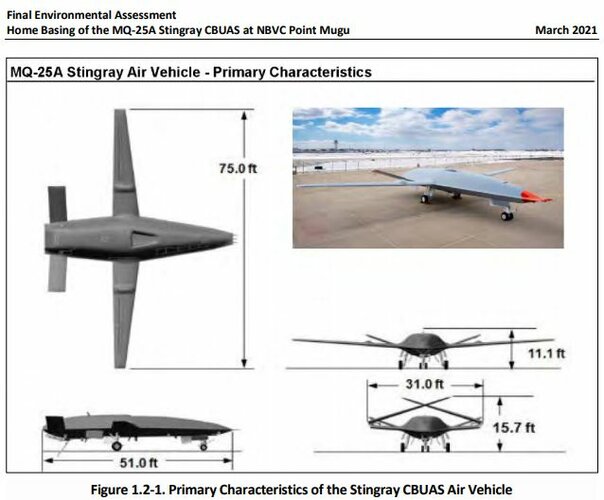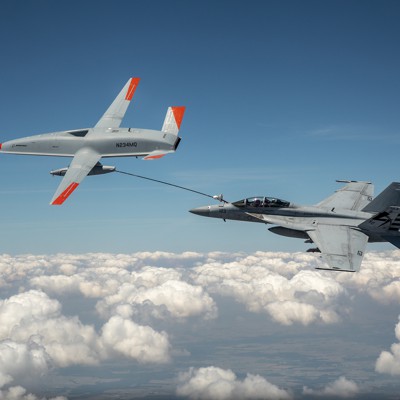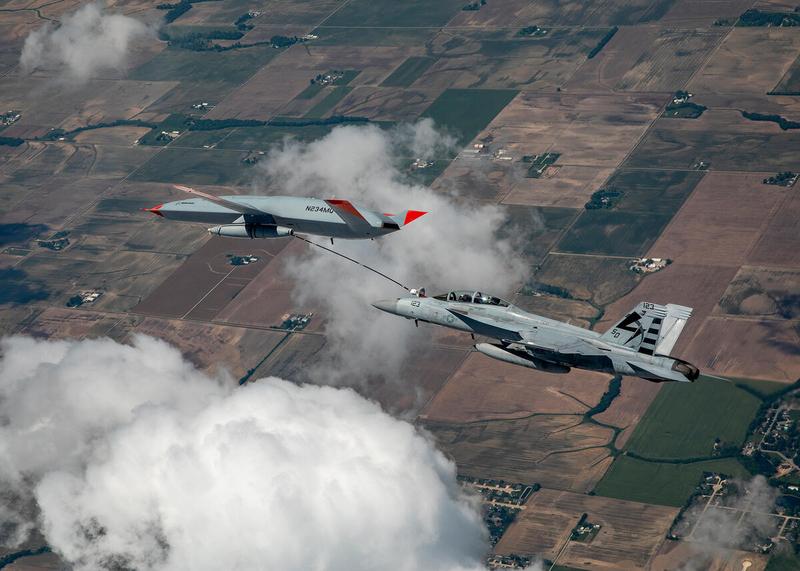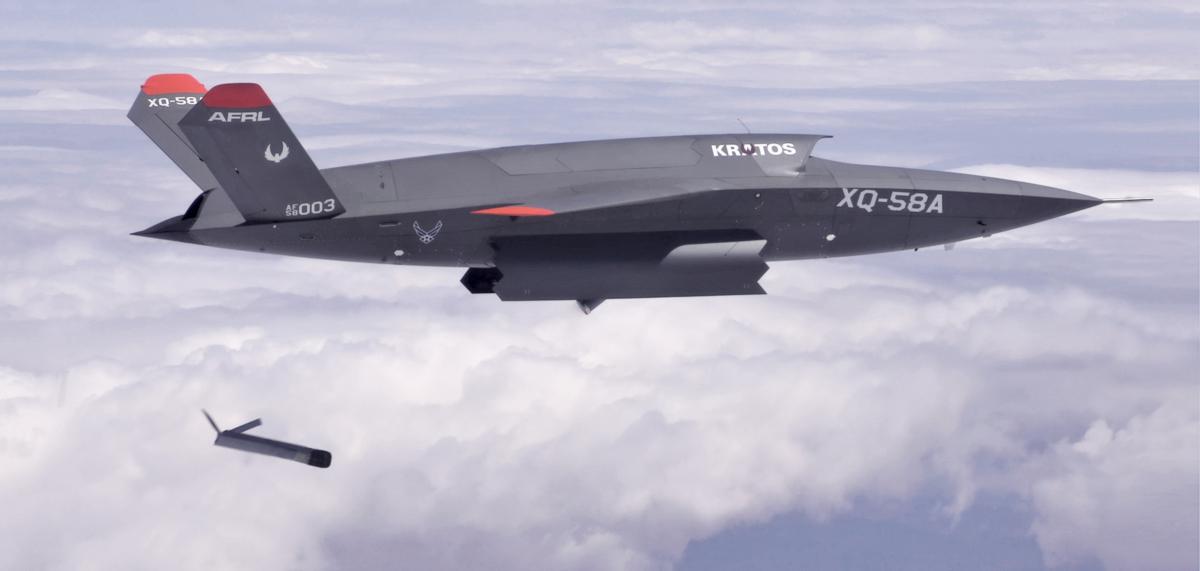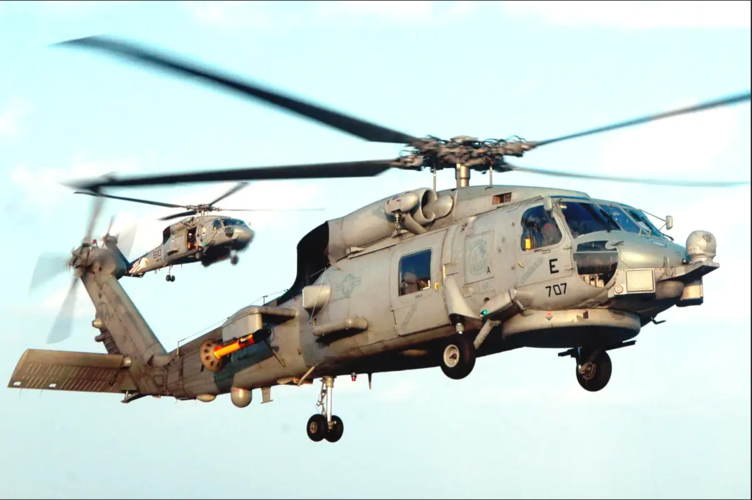....Under the Proposed Action, the Navy would home base 20 Stingray CBUAS; construct a hangar, training facilities, and supporting infrastructure; perform air vehicle (AV) maintenance; provide training for air vehicle operators (AVOs) and maintainers; conduct approximately 960 Stingray CBUAS annual flight operations.....
....The Stingray CBUAS is designed to enhance aircraft carrier capability and versatility for the Joint Forces Commander through integration of an effective, sustainable, and adaptable Unmanned Aerial System (UAS) into the carrier air wing (CVW). The Stingray CBUAS will be the Navy’s first carrier-based unmanned aircraft to function primarily as a mission refueling AV, extending the range and reach of the CVW. The Stingray CBUAS will also provide secondary recovery tanking (refueling close to the carrier), as well as intelligence, surveillance, and reconnaissance capabilities....
....The Navy anticipates establishing a home base for the Stingray CBUAS on each coast of the continental U.S. and one permanent detachment in support of the Forward Deployed Naval Forces-Japan. Based on strategic guidance, the West Coast squadron would be established before the East Coast squadron. The Fleet Replacement Squadron (FRS) must be co-located with the first operational squadron to provide initial and follow-on training. This EA focuses on the home basing for the West Coast of the continental U.S. The West Coast Stingray CBUAS Squadron would be comprised of four detachments, each intended to be deployed with an E-2C/D Hawkeye Airborne Command & Control (VAW) squadron.
....The Stingray CBUAS consists of two segments, the AV (aircraft) and the ground control station. The AV is capable of launch and recovery aboard aircraft carriers at-sea and at airfields on land. Stingray CBUAS’ support and handling equipment includes the deck handling system, spares, and repair materials. An AVO uses the ground control station and its associated communication equipment in line of sight and beyond line of sight control of the AV for all phases of the mission, including engine start, taxi, take-off, mission functions, landing, and engine shutdown.
....The first Stingray CBUAS detachment and all supporting elements will begin operation in the U.S. Pacific Fleet no later than FY 2025. The Stingray CBUAS will achieve full operational capability in approximately FY 2031.
....AVO training in the fleet and FRS is expected to take place largely in virtual environments. Virtual training is supplemented with live flight training. The Stingray CBUAS will perform conventional take-offs and landings ashore and will also have the ability to perform an arrested landing in the event of AV malfunction or when conditions warrant a precautionary arrested landing. AVO proficiency training will include some live flight training; however, the number of expected flights and airfield operations are significantly less than that of other manned carrier squadrons.
...During offshore flight operations, Stingray CBUAS may conduct its aerial refueling mission at altitudes between 5,000 and 25,000 feet.
...Building PM385 Battery Shop: An approximately 2,000 sq ft addition to the existing aircraft battery shop on the installation in Building PM385 is proposed for lithium-ion battery maintenance and storage (Figure 2.3-3).


